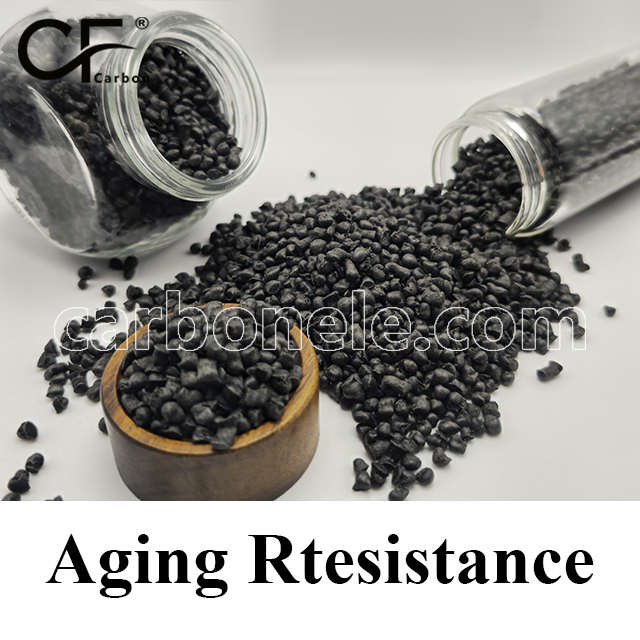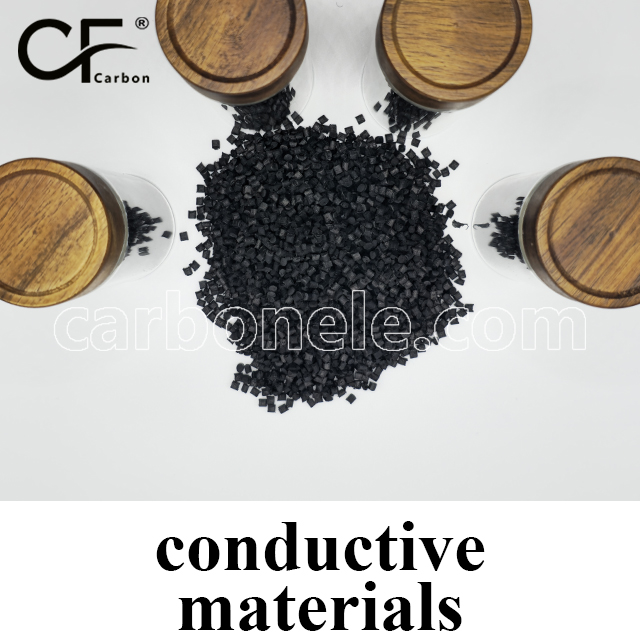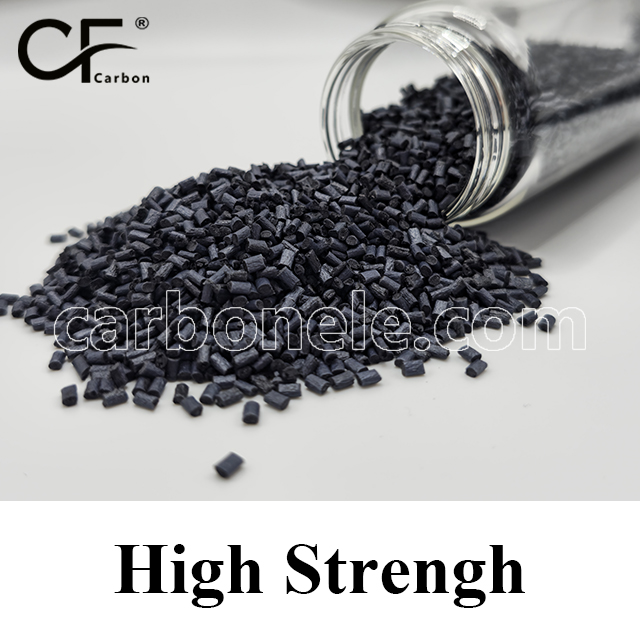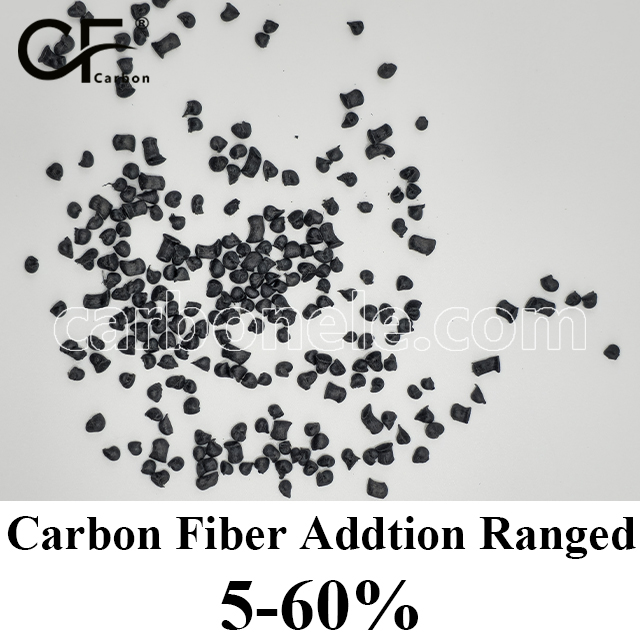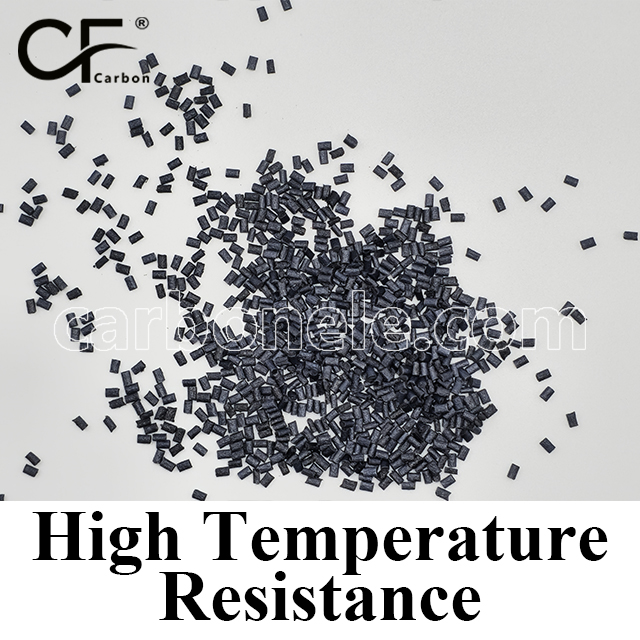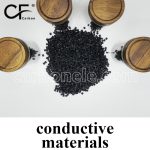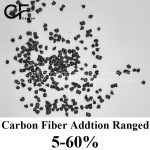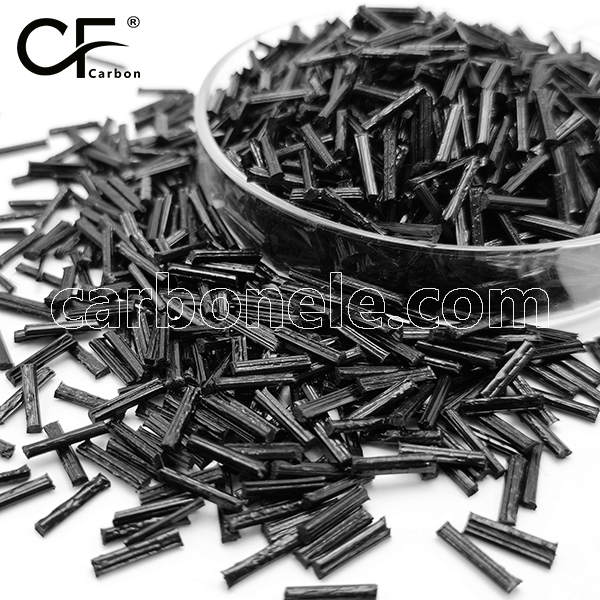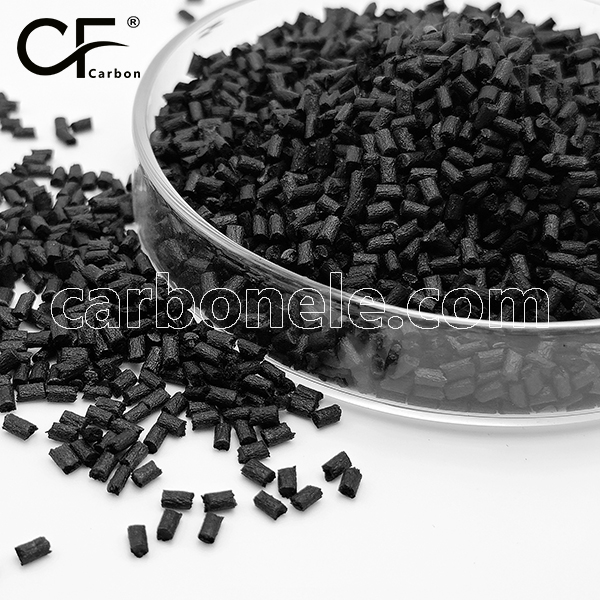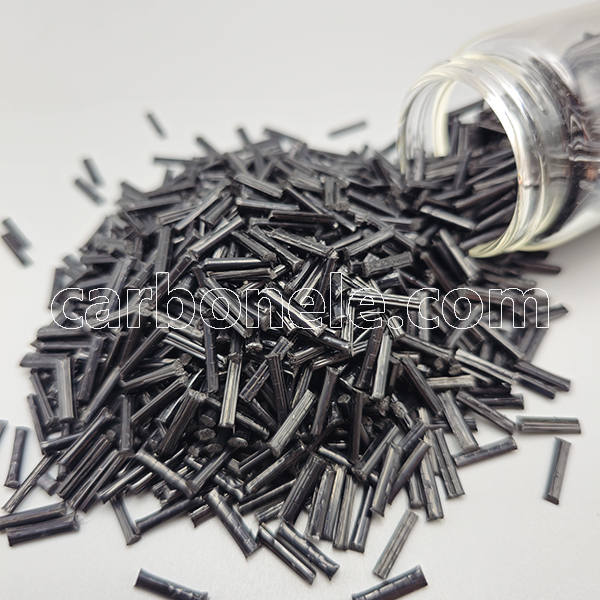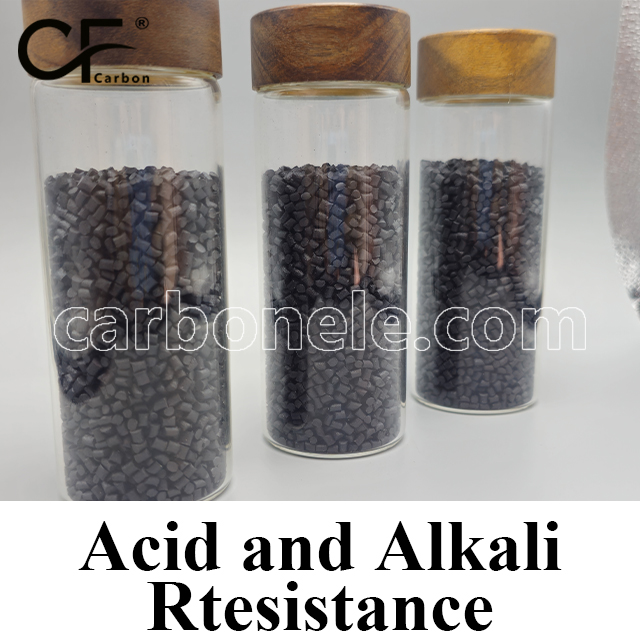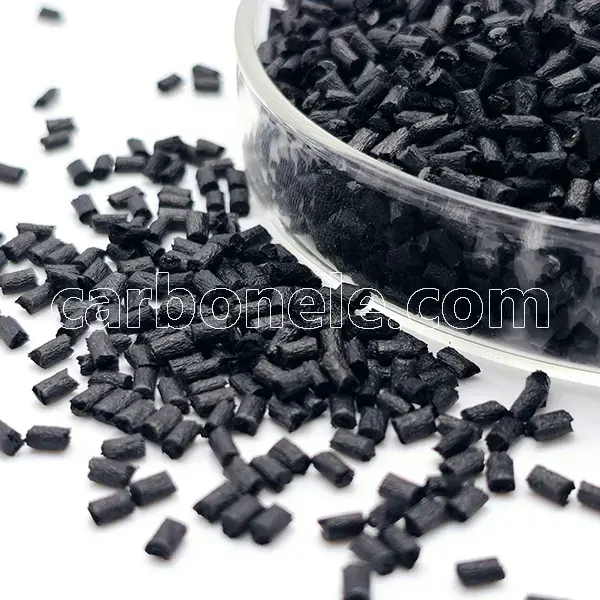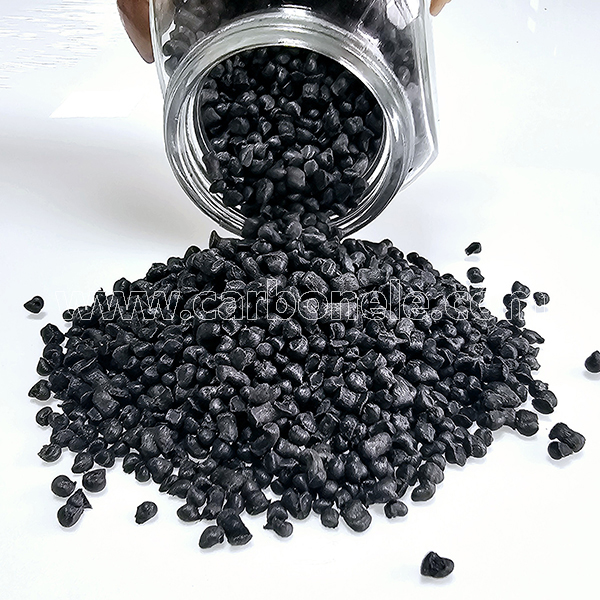The friction coefficient of PA66-CF is significantly lower than that of unreinforced PA66, thanks to the presence of carbon fiber, which acts as a solid lubricant. While PA66 already offers decent wear resistance, the addition of carbon fiber greatly enhances its tribological performance by reducing surface friction and improving wear resistance under load and repeated motion. This makes PA66-CF especially suitable for applications involving sliding contact or dynamic mechanical stress.

High strength PA66-CF5 carbon fiber blend
PA66-CF5 is a high performance composite material made from nylon 66 reinforced with 5% carbon fiber. It features a tensile strength of 90-120 MPa, impact strength of 60-90 kJ/m², and a wear rate of less than 0.1 mm³/kWh, making it ideal for automotive, sporting, and consumer applications.
- Model number: PA66-CF-BCA05
- Matrix Resin: Nylon6 6(Polyamide66) (PA66)
- Reinforcing Filler: Carbon fiber
- Appearance: Granules
- Grade: Injection/extrusion grade
- Packaging: 25kgs/bag
PA66-CF5: Enhanced-Performance Carbon Fiber Reinforced Polyamide 66
PA66-CF5 is a high performance polyamide 66 (PA66) composite reinforced with 5% carbon fiber, offering improved strength, stiffness, and dimensional stability over unreinforced PA66. With its moderate carbon fiber content, this material balances enhanced mechanical performance with excellent processability and thermal resistance. PA66-CF5 is particularly suited for structural applications requiring higher strength and rigidity without sacrificing toughness and long-term durability.
Key Mechanical Properties
Tensile Strength: ≥ 85 MPa
Flexural Strength: ≥ 110 MPa
Notched Impact Strength: ≥ 8 kJ/m²
The 5% carbon fiber reinforcement provides a significant upgrade in mechanical strength and stiffness while maintaining good impact resistance, making PA66-CF5 suitable for lightweight functional components.
Thermal and Chemical Resistance
PA66-CF5 delivers excellent thermal and chemical performance, making it well suited for parts exposed to heat and industrial fluids.
Heat Deflection Temperature (HDT): Approx. 120°C
Long Term Service Temperature: Up to 110°C
Chemical Resistance: Excellent resistance to oils, greases, fuels, and weak acids; moderate resistance to bases; not suitable for strong acids or oxidizing agents
Wear Resistance and Processing
The addition of carbon fiber enhances wear resistance and reduces surface friction compared to unfilled PA66.
Wear Resistance: Improved over standard PA66
Processing Methods: Injection molding, extrusion
Processing Notes: No major tooling upgrades required; standard PA66 processing conditions can be used with slight adjustments for optimal fiber dispersion
Environmental Adaptability
Thanks to reduced moisture absorption, PA66-CF5 offers better dimensional stability in humid environments compared to unfilled PA66.
Water Absorption: Lower than standard PA66
Dimensional Stability: Improved consistency across temperature and humidity fluctuations
Typical Applications
PA66-CF5 is ideal for semi structural applications that require improved mechanical strength and stability with good chemical resistance. Typical use cases include:
Automotive Components: Interior clips, brackets, connectors
Industrial Equipment: Lightweight housings, sensor holders, and wear resistant parts
Consumer Electronics: Mechanically stressed internal frames and fixtures
Mechanical Hardware: Gears, bushings, and sliding parts with moderate loading requirements
PA66-CF5 Performance Overview
| Property | Value/Description |
|---|---|
| Carbon Fiber Content | 5% |
| Tensile Strength | ≥ 85 MPa |
| Flexural Strength | ≥ 110 MPa |
| Notched Impact Strength | ≥ 8 kJ/m² |
| HDT | Approx. 120°C |
| Long Term Service Temp | Up to 110°C |
| Chemical Resistance | Excellent, except against strong acids |
| Water Absorption | Lower than standard PA66 |
| Processing Methods | Injection molding, extrusion |
| Wear Resistance | Improved compared to unreinforced PA66 |
If you want to get more information about PA66-CF5, you can vist our Youtube.
Strength between PA66 and PA66-CF
Compared to unreinforced PA66, PA66-CF (carbon fiber reinforced) offers significantly higher strength and stiffness. The addition of carbon fiber increases tensile and flexural strength, enhances dimensional stability, and reduces deformation under load. While standard PA66 provides good toughness and impact resistance, PA66-CF materials are better suited for structural and high-stress applications where superior mechanical performance is required.
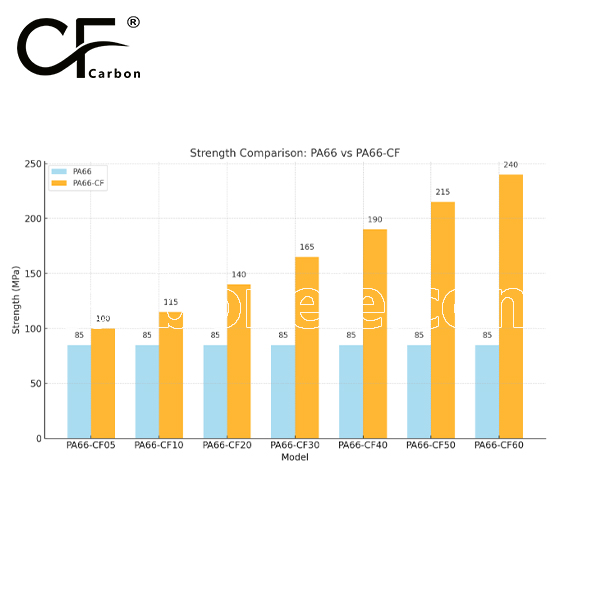
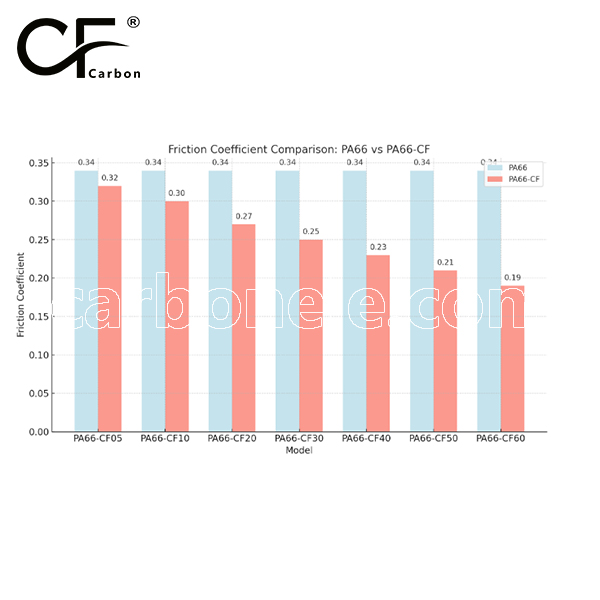

Frequently Asked Questions
Carbon (Xiamen) New Material Co., Ltd. aims to provide buyers with "one-stop" worry-free high-quality services. Here you can find all information about carbon fiber engineering plastics. If you still have questions, please send us an email for consultation!
-
How can I contact the manufacturer of a product that interests me?
When you find a product you are interested in, you can contact the manufacturer directly by sending an email and we will get back to you as soon as possible.
-
How do I find the products that interest me?
All you need to do is enter the keyword, product name in the search window and press the Enter key on your keyboard. Your search results page will then be displayed. You can also search within the product category pages on the home page. Each category is divided into subcategories, allowing you to refine your search and find products that interest you.
-
Where will I find a buying guide?
Please contact our after-sales service directly and we will provide you with a comprehensive operating guide.
-
What are CF Reinforced Thermoplastic Composites?
CF Reinforced Thermoplastic Composites are materials where carbon fibers are incorporated into a thermoplastic matrix. They combine the strength and stiffness of carbon fibers with the processability and recyclability of thermoplastics. For instance, they are used in automotive parts like bumper beams.
-
What are the benefits of CF Reinforced Thermoplastic Composites over traditional composites?
The key benefits include faster production cycles, easier recyclability, and better impact resistance. They also offer design flexibility. An example is in the manufacturing of consumer electronics casings where complex shapes can be achieved more easily.
-
How are CF Reinforced Thermoplastic Composites processed?
Common processing methods include injection molding, extrusion, and compression molding. Injection molding is widely used for mass production. For example, in the production of small components for the medical industry.
-
What industries use CF Reinforced Thermoplastic Composites?
They are utilized in aerospace, automotive, medical, and sports equipment industries. In aerospace, they can be found in interior components. In the medical field, they might be used in prosthetics.
-
How does the carbon fiber content affect the properties of the composites?
Higher carbon fiber content generally leads to increased strength and stiffness but may reduce ductility. A moderate content is often balanced for specific applications. For example, a higher content might be preferred in structural parts of a race car.
-
What are the challenges in using CF Reinforced Thermoplastic Composites?
Challenges include higher material costs, complex processing equipment requirements, and ensuring uniform fiber dispersion. Issues with adhesion between the fibers and the matrix can also arise. An example is in achieving consistent quality in large-scale production.








